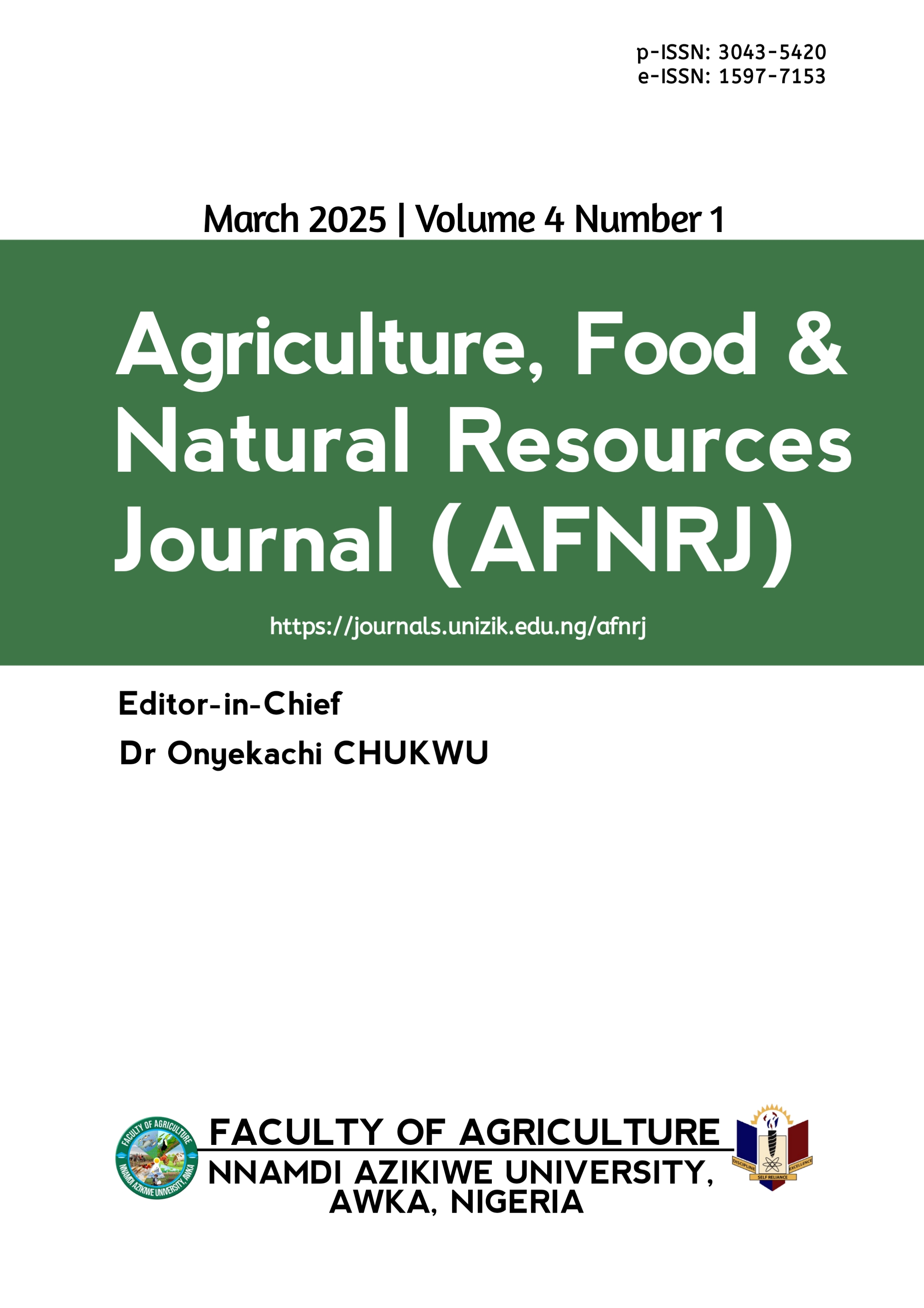Species diversity and abundance of anthropogenically disturbed areas of a Strict Nature Reserve in Ondo State, Nigeria
DOI:
https://doi.org/10.5281/zenodo.15113767Keywords:
COVID-19 pandemic, Forest restoration, Hemp planting, Native speciesAbstract
This study evaluated the impacts of anthropogenic activities on tree species diversity and abundance. Tree species diversity and abundance of the degraded and undisturbed areas of the forest were assessed and compared. A total of 16 temporary, equal-sized plots (25m x 25m) were laid in both the degraded and undisturbed areas of the SNR using the systematic sampling technique. In each of the sampling plots, tree growth data were collected from all the living trees categorised as mature trees with Diameter at Breast Height (DBH) ≥ 10cm, saplings (DBH 1-9 cm), and seedlings (DBH ≤ 1.0cm). The trees were identified to species level and classified into families. In the overstory layer, 46 species from 18 families and 32 species from 15 families were encountered in the undisturbed and degraded areas, respectively. The sapling density per hectare was 91.8% more in the undisturbed area than what was recorded in the degraded area. The diameter distribution curve revealed a significant decline in tree density per hectare in the degraded area. The Jaccard similarity index between the degraded and undisturbed areas reveals that the overstory, sapling, and seedling layers were 42%, 27%, and 29% similar, respectively. The degraded area exhibited a significant loss of native tree species. The findings suggest that anthropogenic disturbances have significantly reduced tree species diversity and abundance in the degraded area. Hence, immediate conservation actions, including logging bans, agricultural restrictions, and enrichment planting, are essential to restore the degraded forest.
Downloads
Published
Issue
Section
License

This work is licensed under a Creative Commons Attribution 4.0 International License.
which permits unrestricted use, distribution, and reproduction in any medium, provided the original author and source are credited.
Authors retain the copyright of their published work in the AFNRJ.





